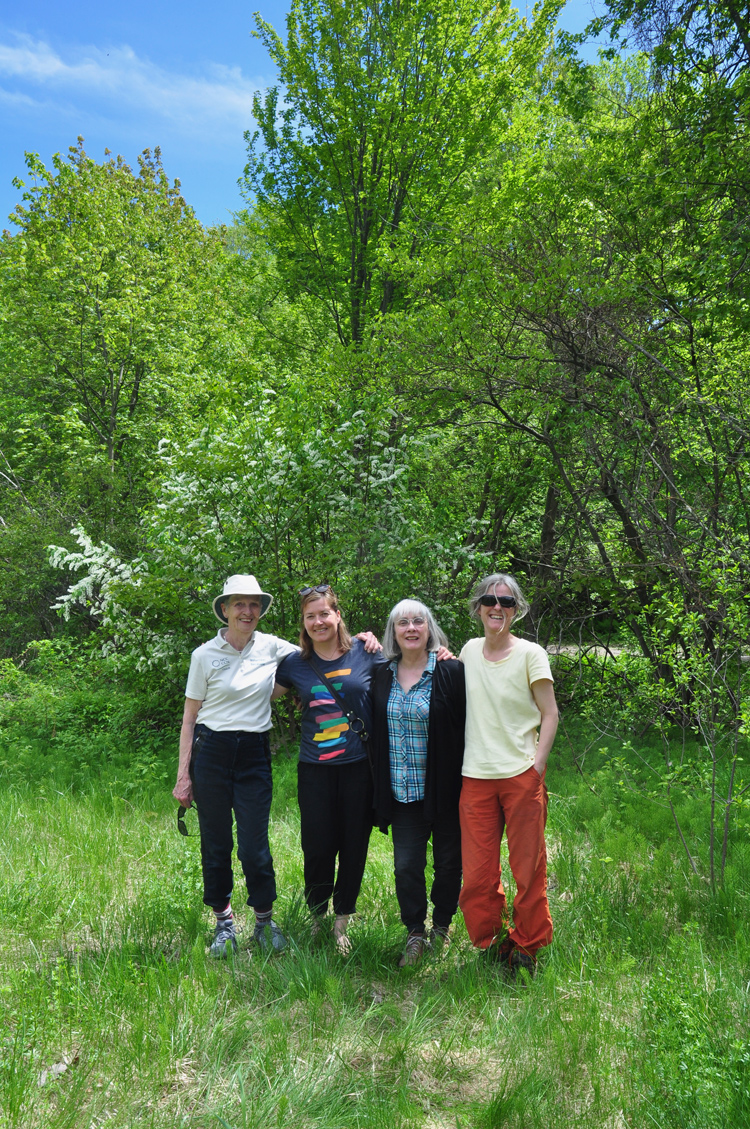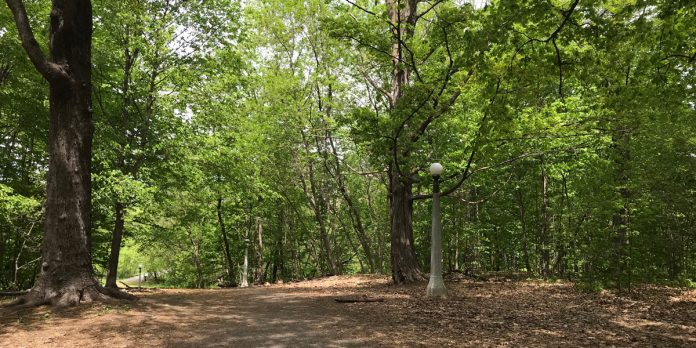Submitted by Sharon Boddy –
Since 1927, when the National Capital Commission’s predecessor bought the land, Hampton Park has been Kitchissippi’s backyard. It’s the place where many of us have played, exercised, walked the dog, daydreamed, picnicked, or flown kites. Some of the same trees that were there 50, 100 or even 200 years ago are still there today.
But Hampton Park is in trouble.
In 2015 the NCC removed about 400 trees and replanted at least half of what was lost with other species like burr oak, yellow birch, and eastern white pine, to name a few. The trees removed were mostly white ash, devastated by the emerald ash borer, an invasive insect. White ash is now a critically endangered species.
Since then, more mature trees have been lost or damaged by extreme storms, and more are at risk. In some areas, native grape vines have already smothered dozens of small trees, depriving them of sunlight; some newly planted trees are in their path. Japanese knotweed, a non-native, invasive species is also moving into areas where trees once stood and shading out smaller native species.
Population increases are also putting the pressure on. Between 1996 and 2016, Kitchissippi’s population increased by only about 2,000 people. Between 2016 and 2018, however, the ward’s population jumped from 38,640 to almost 45,000. Planned developments, like Westgate, will further increase foot, bike and dog traffic, and risk more damage to tree roots, soil compaction, and dead and damaged vegetation.

Climate change response
Public parks and urban forests are important in adapting to and responding to climate change impacts, like extreme storms and temperatures, and excessive flooding.
Urban forests help cool the city. Step into the Hampton Park woods on a hot summer day and it’ll be a few degrees cooler. Trees absorb millions of litres of stormwater every year, lessening the impacts from local flooding. One mature sugar maple, for example, can absorb more than 20,000 litres of water every year. Trees and vegetation remove pollutants like excess carbon dioxide, sulfur dioxide, and particulate matter from the air; promote biodiversity; and provide food and habitat for local and migratory wildlife. Public parks and forests are also good for us. Study after study shows that having access to greenspaces make us healthier.
Hampton Park has environmental protection but few people are aware of it. In 2005, the City of Ottawa published its list of Urban Natural Areas. As a protected zone, certain activities are prohibited in Hampton Park (UNA 122). Other than signage about on- and off-leash dog areas, however, park users don’t know what activities are and are not permitted and why.
Taking action
A small group of neighbours and local groups recently met with representatives from the NCC and the City to see what can be done to conserve Hampton Park for the next 100 years. The NCC is the majority landowner; the City is responsible for maintenance (recreational facilities, garbage, mowing, etc.).
We discussed issues affecting the park and woods, the possibility of installing educational signage to protect key areas, and the resources available to help us plant more trees and other native species, and keep invasive species under control. As a result of the meeting, a request for recycling bins has already been made.
We’ve made an excellent start but need help to raise awareness of the issues affecting Hampton Park – and by extension all greenspaces – so that we can ensure that the park remains an important public resource for the next 100 years.
If you’re concerned about the changes you’ve seen and want to get involved, please send an email to Friends of Hampton Park, c/o Sharon Boddy at urbanweedeater@gmail.com.
Sharon Boddy is an environmental writer and researcher, and 50+ year resident of Kitchissippi.
